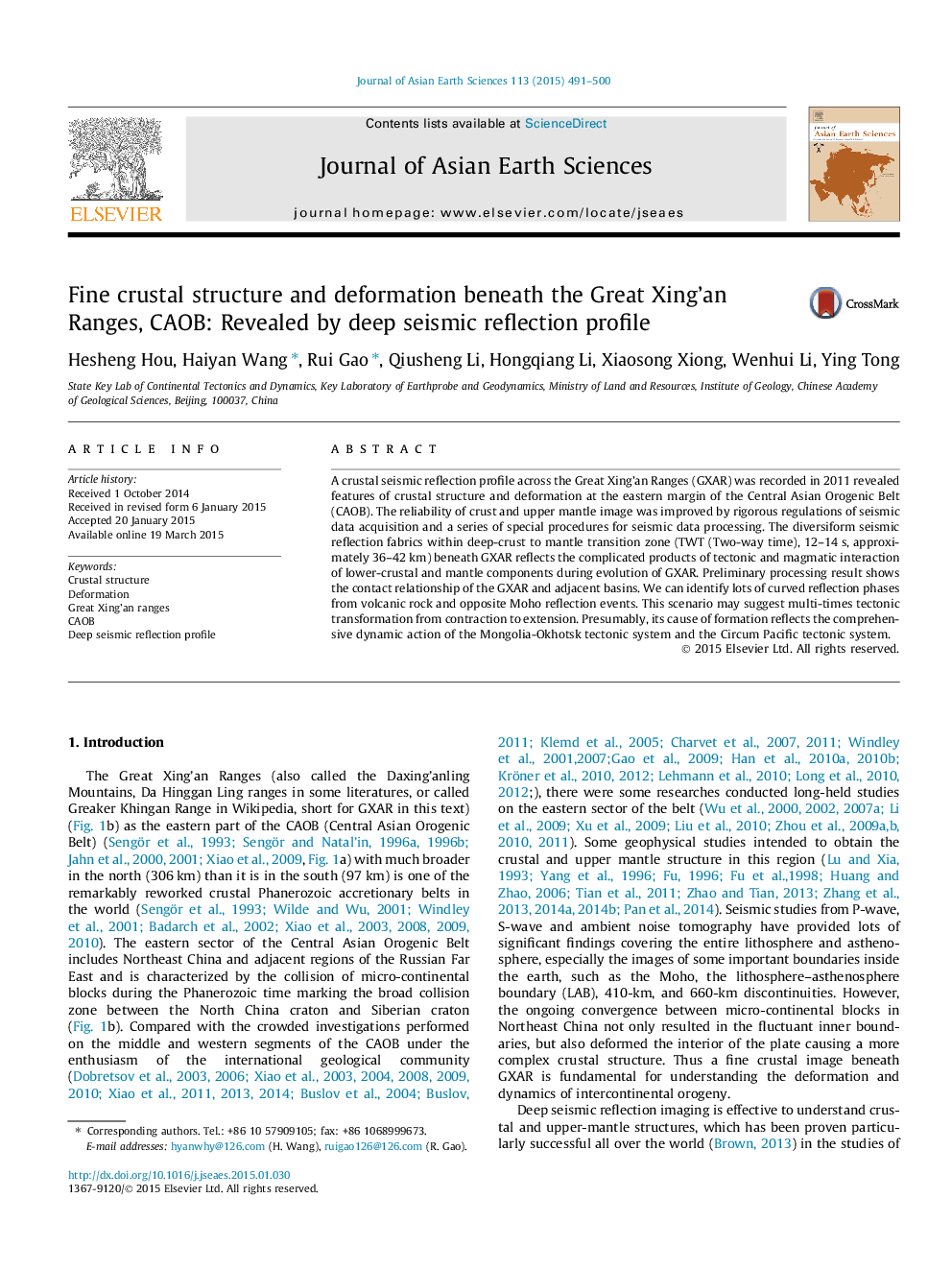| Article ID | Journal | Published Year | Pages | File Type |
|---|---|---|---|---|
| 4730242 | Journal of Asian Earth Sciences | 2015 | 10 Pages |
•A crustal seismic reflection profile across the Great Xing’an Ranges was introduced.•Features of crustal structure and deformation styles were revealed.•The crustal structure was approved by rigorous data acquisition and processing.•Curved reflection phases and opposite Moho reflection events were identified.•Dynamic action of the Mongolia-Okhotsk and the Circum Pacific tectonic system.
A crustal seismic reflection profile across the Great Xing’an Ranges (GXAR) was recorded in 2011 revealed features of crustal structure and deformation at the eastern margin of the Central Asian Orogenic Belt (CAOB). The reliability of crust and upper mantle image was improved by rigorous regulations of seismic data acquisition and a series of special procedures for seismic data processing. The diversiform seismic reflection fabrics within deep-crust to mantle transition zone (TWT (Two-way time), 12–14 s, approximately 36–42 km) beneath GXAR reflects the complicated products of tectonic and magmatic interaction of lower-crustal and mantle components during evolution of GXAR. Preliminary processing result shows the contact relationship of the GXAR and adjacent basins. We can identify lots of curved reflection phases from volcanic rock and opposite Moho reflection events. This scenario may suggest multi-times tectonic transformation from contraction to extension. Presumably, its cause of formation reflects the comprehensive dynamic action of the Mongolia-Okhotsk tectonic system and the Circum Pacific tectonic system.
